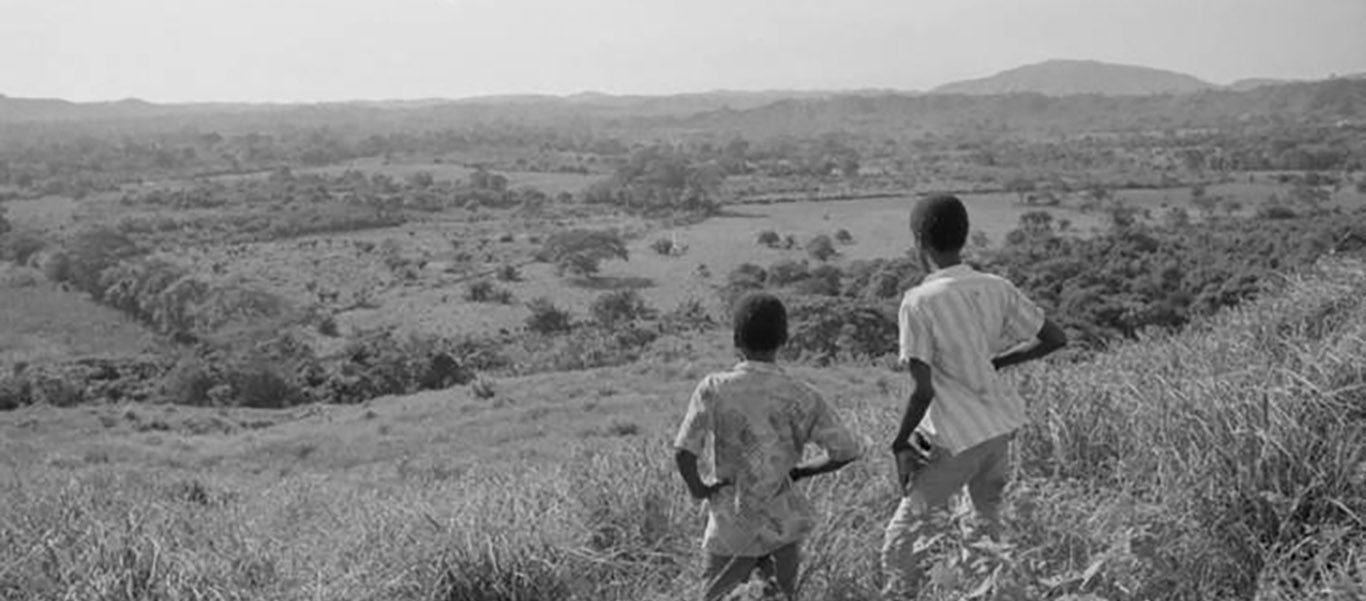
Volume Six – San Basilio de Palenque, Colombia: A Legacy of African Survival in the face of Spanish Colonialism
San Basilio de Palenque is a small community located in the highlands of northeastern Colombia that traces its lineage to a West African population of escaped slaves that existed in the 16th through 18th centuries during the time of Spanish colonization.
The Palenquero’s history is that of one of the few communities of free Africans in all of Latin America, forced to live in the mountains away from colonial civilization, developing a unique society, culture and language, and their survival and identity tied to the land.
California Curriculum Framework and Standards
10th Grade California Curriculum Framework and Standards
World History and Geography: Medieval and Early Modern Times
Students in grade seven study the social, cultural, and technological changes that occurred in Europe, Africa, and Asia in the years A.D. 500–1789. After reviewing the ancient world and the ways in which archaeologists and historians uncover the past, students study the history and geography of great civilizations that were developing concurrently throughout the world during medieval and early modern times. They examine the growing economic interaction among civilizations as well as the exchange of ideas, beliefs, technologies, and commodities. They learn about the resulting growth of Enlightenment philosophy and the new examination of the concepts of reason and authority, the natural rights of human beings and the divine right of kings, experimentalism in science, and the dogma of belief. Finally, students assess the political forces let loose by the Enlightenment, particularly the rise of democratic ideas, and they learn about the continuing influence of these ideas in the world today.
7.1 Students analyze the causes and effects of the vast expansion and ultimate disintegration of the Roman Empire.
1. Study the early strengths and lasting contributions of Rome (e.g., significance of Roman citizenship; rights under Roman
law; Roman art, architecture, engineering, and philosophy; preservation and transmission of Christianity) and its ultimate
internal weaknesses (e.g., rise of autonomous military powers within the empire, undermining of citizenship by the growth of
corruption and slavery, lack of education, and distribution of news).
2. Discuss the geographic borders of the empire at its height and the factors that threatened its territorial cohesion.
3. Describe the establishment by Constantine of the new capital in Constantinople and the development of the Byzantine
Empire, with an emphasis on the consequences of the development of two distinct European civilizations, Eastern Orthodox
and Roman Catholic, and their two distinct views on church-state relations.
7th Grade World History and Geography: Medieval and Early Modern Times
Curriculum Framework (2016)
Unit 9 of 10, Global Convergence, 1450-1750, pp. 224-230
European colonizers seek agricultural products such as corn and potatoes, as well as addictive substances such as tobacco and chocolate, and precious metals. Christian missionaries seek religious conversation of natives. African slavery leads to hybrid populations and culture. Europeans establish colonies, take land and use it to grow cash crops, force native people to work for Europe. In the Americas, slavery becomes racialized, and Europeans begin to cultivate the idea that Africans are lesser people who are supposed to be enslaved.
Content Standards 7.7.2 and 7.7.3 (1998)
Study the roles of people in each society, including class structures, family life, warfare, religious beliefs and practices, and slavery.
9th Grade Elective Courses in History-Social Science
Curriculum Framework (2016)
World and Regional Geography course, pp. 288-290
Students examine specific geographic features of various regions of the world before turning to a thematic approach covering those issues of most significance. Students learn to read maps and trace the diffusion of people and cultural influences. Geographic inquiry helps students understand their own place in the world, thinking at a macro level about the geopolitics of today, as well as thinking on a local level about how and why communities look and operate as they do.
Physical Geography course, pp. 300-302
Physical geography is the study of natural features and processes on or near the surface of the planet. Geography inquiry also includes study of the human presence on the earth, the nature of the environment, and both the impact of humans on the environment and the impact of the environment on humans.
Anthropology course, pp. 305-306
In this course, two of four subfields support the study of San Basilio de Palenque. Archaeology focuses on cultures and civilizations of the past through the close analysis of material and human remains. Cultural anthropology examines the range of systems, practices, and customs that are characteristic of communities in the contemporary world.
Compelling and Supporting Questions
- are intellectually rigorous and
open-ended - are relevant and interesting
- spark inquiry
- motivate students to want to learn more
Historical Content
Bullet points that
- cover basic content
- inform slide presentations
- teach note-taking
- lead to resources – websites and published curriculum
Evaluating Sources & Using Evidence
- Students evaluate and analyze multiple sources and perspectives.
- Students make conclusions supported by evidence carefully gathered and analyzed.
History of San Basilio de Palenque
A community of the descendants of enslaved Africans in Latin America who escaped European colonialism of the 16th-18th centuries, and whose identity and survival are tied to geography.
Aerial Photographic Perspective
Students make claims about the geographic, agricultural, political, economic and social structures of San Basilio, and find evidence to support those claims by viewing and analyzing photographs.
- Authentic inquiry vs. exploitation
- People, land and physical structures
- Historical thinking skills
- Personalizing historical photographs
Formative and summative assessment options
Bibliographies
References to support deeper study of conflict in Central America
